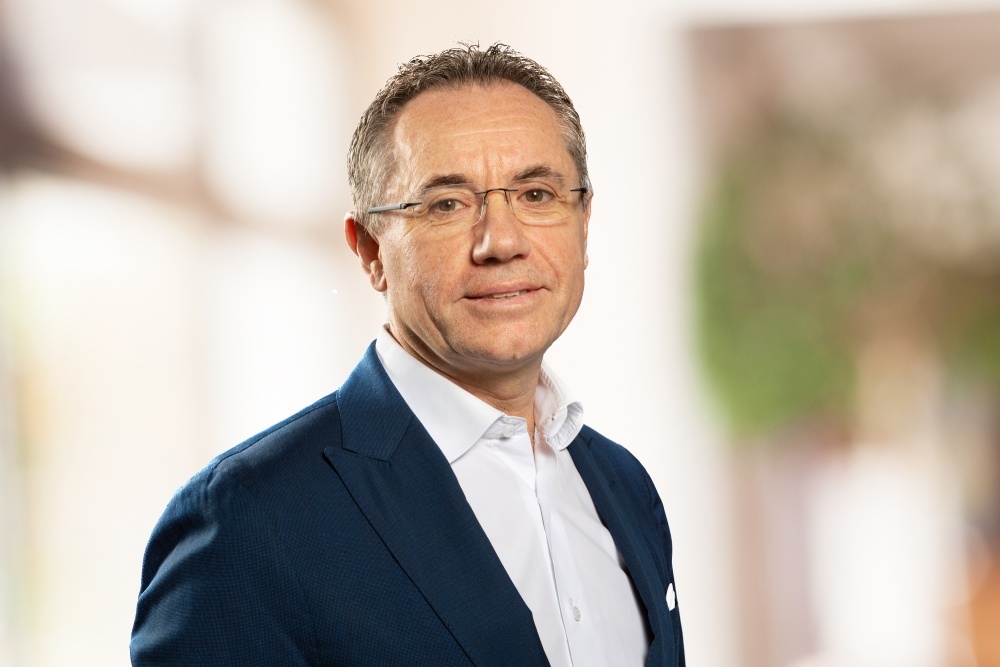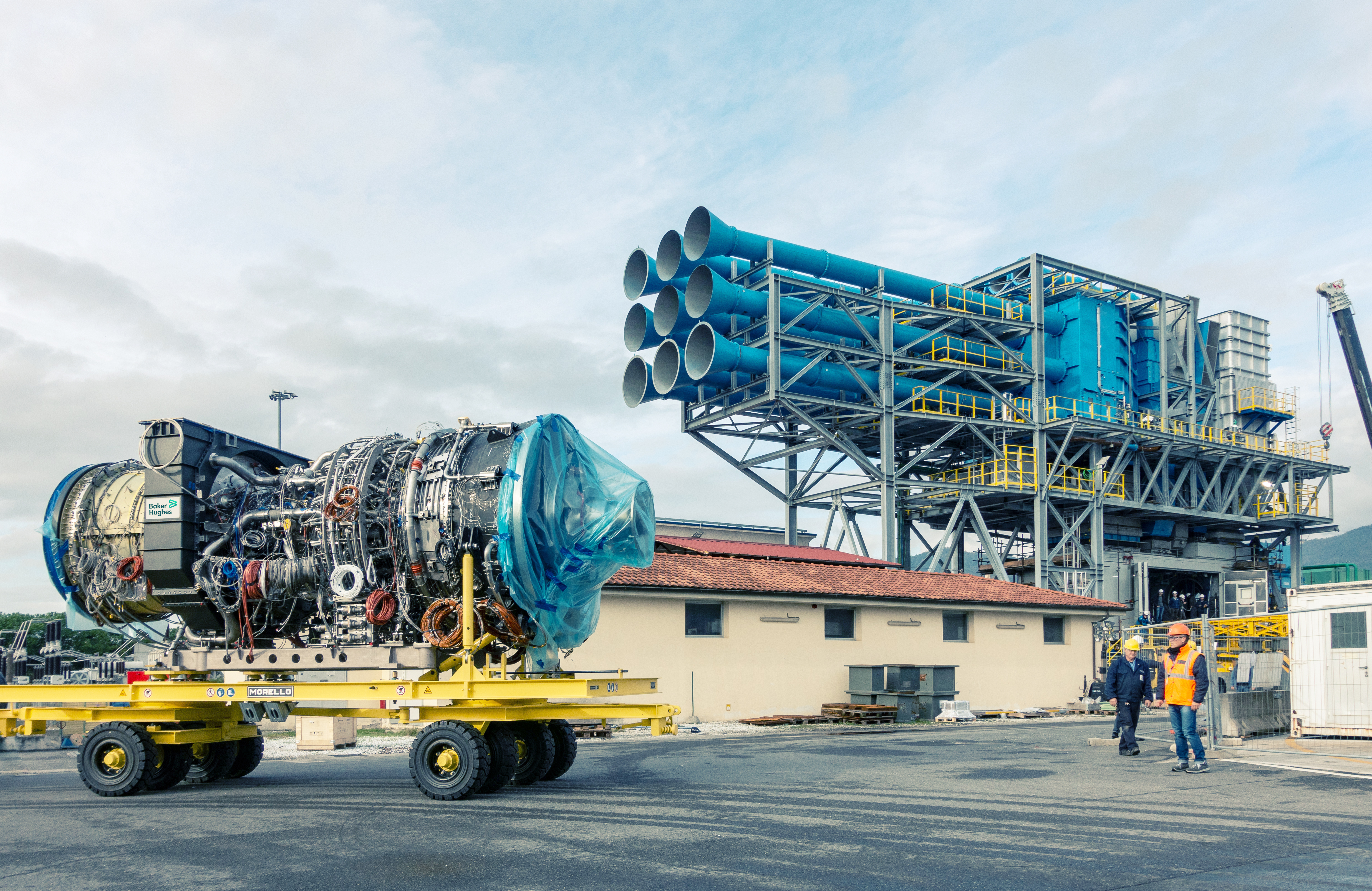Michele Fiorentino, Executive Vice President of Strategy & Business Development, has a powerful personal motivation as he helps to lead the Baker Hughes transformation to an energy technology company, the biggest and most important shift in its long history.
“I have a 10-year-old son and 12-year-old daughter and I’ve been in the oil and gas business for much of my career and often they have asked me whether I was polluting the world…,” says Fiorentino. “Finally, I can now answer without hesitation that I am working hard helping make the world cleaner, and they can be proud of their dad.”

Fiorentino, who has a PhD in chemical engineering and a Masters’ from London Business School, has held leadership roles across the energy, manufacturing and chemical industries, which have included a number of transformation projects and initiatives. He joined Baker Hughes in 2020 to head up the company’s long-term growth strategy, with energy transition a key plank in his remit.
He is constantly thinking through the complexity of this crucial inflection point for the planet. “Sometimes it is all too easy to develop polarized views: ‘fossil fuels are bad’, and ‘anything that’s not fossil fuels is good’,” he says. “The reality is that for the energy transition to be successful we need to address the root cause and cure the effect. So, we must simultaneously reduce the carbon footprint associated with the production of energy from fossil fuels, as well as lower the fossil fuels in the energy mix.”
''The reality is that for the energy transition to be successful, we need to address the root cause and cure the effect.''
Michele Fiorentino, Baker Hughes
All the same, “Fossil fuels will remain an important part of the energy mix; they will not disappear,” says Fiorentino. “They fuel the chemistry on which much of the world lives, apart from energy. So, we need to be able to decarbonize fossil fuels as well as push for green sources of energy.”

With leading-edge technologies and continuing investment in innovation across both the oil and gas and energy value chains, Baker Hughes is perfectly positioned to help in this critical mission. “We have a number of technologies to decarbonize fossil fuel energy production and also technologies that can help us facilitate the development of green energy value chains,” he says. “It’s what really brought me here to Baker Hughes. Even a couple of years ago, some people would have said energy transition is just a fad. Today, almost everyone acknowledges that it’s a necessity.”
Fiorentino joined Baker Hughes to develop the roadmap for how Baker Hughes will go through its biggest transformation in its 100-year history. The company will look to lead by decarbonizing the energy value chain, bringing its deep experience and technology capabilities to a new set of challenges, faced not only by oil and gas but other industries as well.
As much as he admires his company’s technical prowess, Fiorentino cautions: “There is no one technical or engineering solution here … energy transition is a systems play, not a single technology play.” He ticks off a few of the key solutions that in combination will be critical to successful decarbonization, including energy storage, energy efficiencies, demand-response management, and carbon capture, utilization and storage [CCUS].
''Energy transition is a systems play, not a single technology play.''
Michele Fiorentino, Baker Hughes
“We need a host of technical solutions, which is why the regulatory framework is so important, which will further the development of technologies and enable economies of scale to make solutions such as CCUS economically viable,” he explains.

Even more importantly, he adds, “We need to create the right rules that enable these technologies to work as integrated systems, as opposed to discrete systems, and across boundaries. Energy is a global business, not a local business.”
While realistic about the huge challenges ahead to decarbonize the world – Baker Hughes has 2050 as its target date to reach net-zero CO2 equivalent emissions – he is optimistic. “In times of crisis, people recognize they need help, and this creates a more open communication channel as people say, ‘How do we help each other?” he says.
Collaboration is essential for success and Fiorentino says staying open and looking forward is key. “People run the risk of looking down at their feet – they don’t raise their heads enough because they’re just really dealing with the urgency of one problem after the other.”
He acknowledges the reality of short-term pressures, but stresses that long-term strategic partnerships are more important than ever. “It’s a matter of balance: recognizing the pressures our customers are under and helping them address those, but at the same time being able to engage in strategic discussions.”
As Fiorentino scans the future horizon, it’s also clear to him that “in a period of transition, the customers you have today may not be your customers tomorrow”. To that end, he sees success ahead for those who “develop strategic platforms and closer relationships with a range of different customers, including those who are coming from left field and will become an important part of the system in, say, 30 years’ time.”
Fiorentino urges the oil and gas industry to embrace the challenge of reducing its carbon footprint, and points to its long history of engineering innovations. He thinks creative solutions for the existing industry are more critical to decarbonization, rather than responding by divesting or exiting the sector. “You don’t have to walk away from a problem to make it disappear – you can address it by decarbonizing the way you do things,” he says. “These companies have the ability to be part of the solution. One of the things that makes these companies special is their expertise in addressing big engineering challenges – and there is no bigger engineering challenge than reducing the carbon footprint of fossil-fuel energy production. The best play for them is to put their resources into addressing the decarbonization solutions in the sector they already operate in, rather than walking away from it.”
Such massive transformation requires a clear vision and confident leadership to set a company’s culture on track to execute it.
“Change is difficult: It takes focus, it takes energy, and it takes time''
Michele Fiorentino, Baker Hughes

“Change is difficult: it takes focus, it takes energy, and it takes time; three things that are never abundant all together but are needed for a transformation of this kind,” says Fiorentino. “The biggest risks are cultural: being anchored to the past and unable to lift off and unlearn in order to relearn. Or projecting too far into the future and jumping there. There’s only one reality: the present. The future is made out of a number of ‘presents’, lined up one after the other; the past is the same, but going the other direction. You need to be able to bridge the two, and not be too anchored to the past and have an eye to the future. Your task is to build a bridge from one to the other. There’s no secret recipe other than just keep at it.”
Energy Forward Stories
Sign up to stay up to date on the latest innovations and people shaping the future of our industry.



